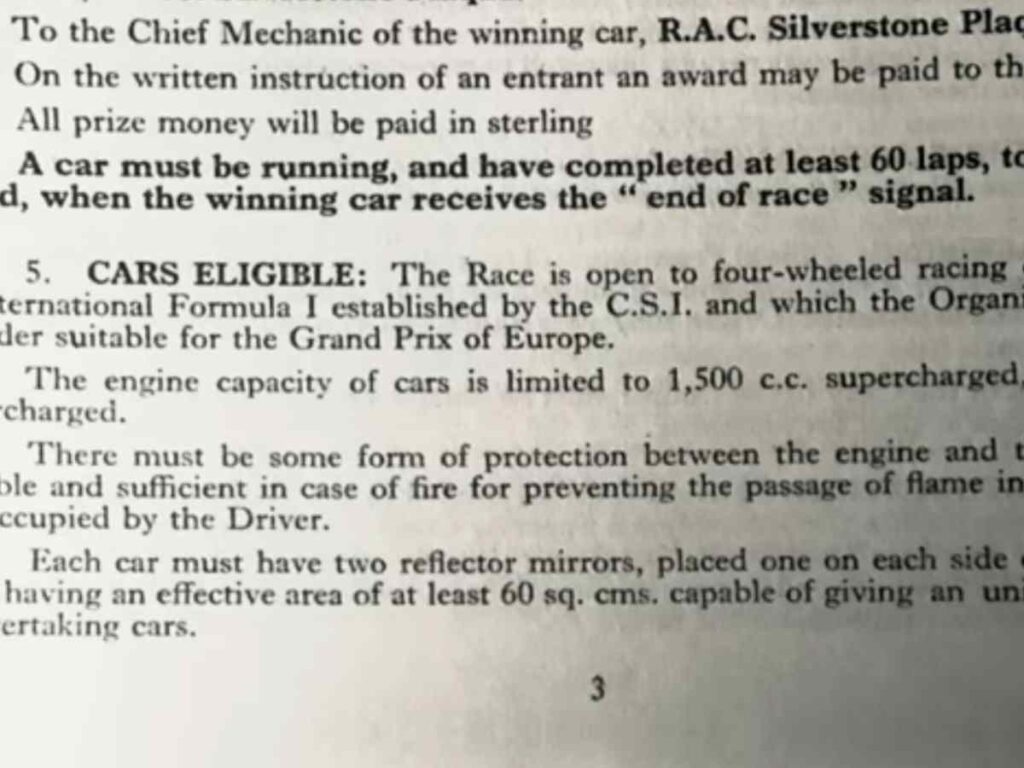Formula 1 car rules were once only 3 sentences long
Formula 1 allowed for massive freedom in the cars back in the day. Except for the defined engine displacements.

Giuseppe Farina, 1950 Silverstone
Formula 1 has a rich history. F1 has become the pinnacle of motorsport over the course of decades. Consequently, the sport has become the peak of technology and innovation. Hence teams spend millions of dollars every year in a bid to gain an edge over its rivals. As a result, the F1 rulebook of the present day is one of the most comprehensive set of regulations. However, things were not always like this and there was a time when teams had much more freedom.
The first Formula 1 season took place in 1950. The Formula 1 World Championship would officially commence that year. Although, F1 would continue to use the rules established by the AIACR (now known as the FIA) in 1947. Back in those days, teams had perhaps the most room for development as the sporting rulebook only consisted of 3 sentences regarding the racing cars. This was recently pointed out on Reddit.
The “Cars Eligible” section of the Formula 1 rulebook stated that the championship was only open to four-wheeled cars. The F1 cars must be approved by the Organisational committee to be suitable for the “Grand Prix of Europe.” Additionally, major emphasis was laid on the engine. The engine capacity of cars was limited to 1500cc for supercharged engines, or 4500cc for “un-supercharged” runners. Notably, the cars could run with as many cylinders as the teams preferred.
F1 Teams could race any car as long as it had 4 wheels and met the engine displacement

This set of regulations is a far cry from the complex and detailed code Formula 1 has today. Safety is presently, a priority in F1. However, back in the 1950s, motorsport was dangerous with drivers having fatal accidents frequently. Correspondingly, the rules only mentioned the need for “Some form of protection between the engine and the driver’s seat.” This protection also had to prevent flames from reaching the cockpit in case of a fire. Unfortunately, drivers like Niki Lauda would become victims of such incidents for decades.
The only technical aspect of the Formula 1 car rules of 1950 was the mirrors. The cars required two reflective mirrors on either side of the cars. With each “having an effective area of at least 60 sq. cms. capable of giving an uninterrupted view of overtaking cars.” Accordingly, the founders of the sport knew the significance of visibility in racing. Thus, this concludes the entire sporting code of F1 cars from 1950 as established by the present-day FIA.
Hence, Formula 1 has evolved drastically with time. Currently, F1 has a vast sporting code which defines each and every aspect of the cars. The new rules introduced in 2022 aimed to close up the field and as such, reduced the scope of freedom in the development. Yet, F1 continues to be the peak of innovation in the auto industry. Certainly, a three-sentence rulebook is simply not feasible in today’s day and age.
Read More: How long is a Formula 1 race?
Read More: Which was the first alcohol brand to sponsor a car in Formula 1?


Armaan Agarwal
(1472 Articles Published)